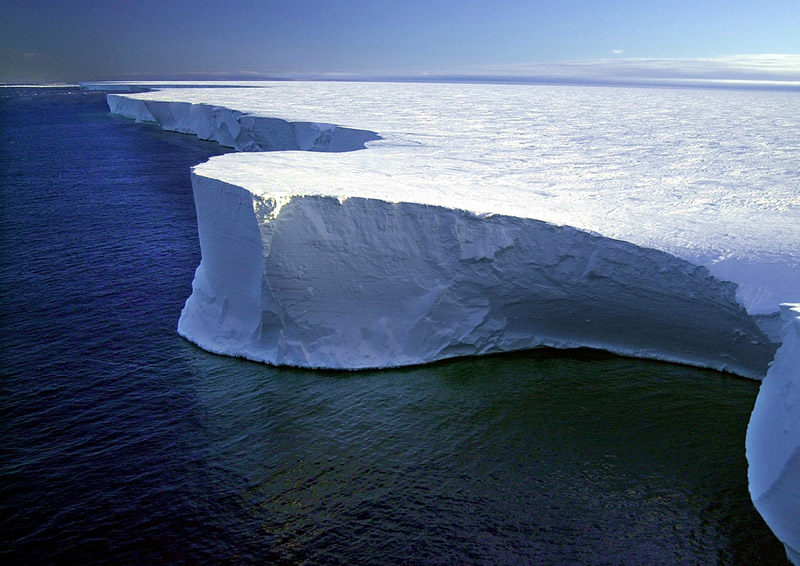Climate emergency - time for action

|
| Civil engineers should be helping society with valid concerns on climate change and helping with coming emergencies. Robert Thorniley-Walker reviews past and future needs. Photo caption: Arctic summer ice volumes have fallen exponentially in the past 40 years and could disappear by 2025, |
Contents |
[edit] Introduction
Younger civil engineers have started to demand action in a profession that once claimed to control the natural environment. As suggested by a former Institution of Civil Engineers (ICE) task force (Kermode, 2017), civil engineers are pleased to help resist the impact of the changing environment, but they also need to admit to their role and responsibility in heating the planet.
[edit] Assessing the environmental fallout
Construction continues to cause around 17% of world greenhouse gas emissions, so it must be time to assess the risks from the industry’s short-term impact, as originally recommended by the UK Engineering Council in 1994. Instead, there has been extraordinary inertia over the past few decades. Many question how and why they should act without firm proof of danger, pointing out that land temperatures almost stopped rising at one point.
Instead the profession’s efforts in recent years have centred on achieving social and economic sustainability, using established high-carbon-dioxide solutions, and delivering the United Nations’ 17 sustainable development goals, even though only one involves the critical issue of climate change. Furthermore targets, codes of practice and even climate-emergency declarations tend to consider whole-life emissions over 60−120 years rather than current emission levels.
[edit] Forensic view of environmental risks
ICE has published many papers, often in its Engineering Sustainability journal, on aspects of engineering in relation to climate change, but remarkably few concentrate on the underlying causes and likely conditions to be met. ICE’s Forensic Engineering journal has published two useful themed issues (Thorniley-Walker, 2015a and 2017) by climate scientists and engineers, giving updates on the exponential temperatures, design needs and risk, Arctic sea-ice melt, flood risks and new hurricane risks.
When pressed, even sceptical civil engineers accept there are real and imminent dangers from climate change. Surveys of opinions by the author (Thorniley-Walker, 2015b) have, for example repeatedly indicated that for 2°C of warming, 10% of the world population will need to move, for 3°C 35% of lives will be at risk and for 5°C only 45% of the population will survive. There will soon be blame and liability for major loss of livelihoods and life among the younger generation and their children, especially in the most vulnerable of countries.
[edit] Engineers are part of the problem
In October 2019, the Institution of Structural Engineers held an emergency climate conference,which revealed some alarming statistics. For example, a typical engineer has a carbon dioxide footprint of 1000 t/year, compared to the hard-won savings of just 2t/year from a vegan diet. Civil engineers must refurbish rather than demolish. Replacing concrete and steel and in new-build with stone and solid timber even offers the potential to store carbon in the short to medium term. However, the planet’s eco-system has already been degraded. Clearly the profession needs to stop being part of the problem and instead drive change and restoration.
The key issue is that civil engineers should be using simple risk assessments to address the hazards to and from projects, and particularly the incremental global impacts from the short-term emissions. They then need to have confidence to help society with the approaching climate emergencies.
Civil Engineering is planning a special issue in 2021 on how civil engineers can rise to the challenge of climate change. Read the call for papers.
[edit] About this article
This article, written by ice.org.uk Robert Thorniley-Walker, ex-ICE Climate Task Force member, is based on his briefing article in the 173 CE1 issue of the ICE Civil Engineering journal. It also appeared on the ICE website in January 2020 and can be accessed HERE.
Other articles by the ICE on Designing Buildings Wiki can be accessed HERE.
[edit] Related articles on Designing Buildings Wiki
- Biomass.
- BREEAM Adaptation to climate change.
- Carbon capture processes.
- Carbon emissions.
- Carbon plan.
- Climate Change Act.
- COP21 Paris 2015.
- Emission rates.
- Energy.
- Energy targets.
- Environmental modelling.
- Environmental policy.
- Everything we thought we knew about civil engineering improving the world is wrong.
- Global warming and the tipping point precipice.
- Globe temperature.
- Green Deal.
- Green plot ratio.
- Greenhouse gases.
- Happold lecture on climate change.
- ICE launches engineering route map to deliver UN SDGs.
- Intergovernmental Panel on Climate Change IPCC.
- Kyoto Protocol.
- Not a choice between renewables and nuclear - we need both.
- Radiation.
- RIBA Stirling Prize winners' open letter declaring climate and biodiversity emergency.
- Sustainability.
- UN Sustainable Development Goals.
Featured articles and news
A change to adoptive architecture
Effects of global weather warming on architectural detailing, material choice and human interaction.
How big is the problem and what can we do to mitigate the effects?
Overheating guidance and tools for building designers
A number of cool guides to help with the heat.
The UK's Modern Industrial Strategy: A 10 year plan
Previous consultation criticism, current key elements and general support with some persisting reservations.
Building Safety Regulator reforms
New roles, new staff and a new fast track service pave the way for a single construction regulator.
Architectural Technologist CPDs and Communications
CIAT CPD… and how you can do it!
Cooling centres and cool spaces
Managing extreme heat in cities by directing the public to places for heat stress relief and water sources.
Winter gardens: A brief history and warm variations
Extending the season with glass in different forms and terms.
Restoring Great Yarmouth's Winter Gardens
Transforming one of the least sustainable constructions imaginable.
Construction Skills Mission Board launch sector drive
Newly formed government and industry collaboration set strategy for recruiting an additional 100,000 construction workers a year.
New Architects Code comes into effect in September 2025
ARB Architects Code of Conduct and Practice available with ongoing consultation regarding guidance.
Welsh Skills Body (Medr) launches ambitious plan
The new skills body brings together funding and regulation of tertiary education and research for the devolved nation.
Paul Gandy FCIOB announced as next CIOB President
Former Tilbury Douglas CEO takes helm.
UK Infrastructure: A 10 Year Strategy. In brief with reactions
With the National Infrastructure and Service Transformation Authority (NISTA).
Ebenezer Howard: inventor of the garden city. Book review.
Airtightness Topic Guide BSRIA TG 27/2025
Explaining the basics of airtightness, what it is, why it's important, when it's required and how it's carried out.






















